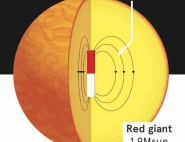Stellar Seismology
![]()
![]()
![]()
![]()
Long runs (central programme)
Focused on the internal hydrodynamic processes of stars in the main sequence evolution stage and around it, the seismology central programme studies in detail the variations of the luminous flux emitted by a small number (50) of stars brighter than magnitude 9. The associated observing runs last 150 days, which provides a resolution of 0.1 µHz in the Fourier space. This frequency resolution is necessary to discriminate a significant number of modes, to reveal the frequency spectrum and to rebuild the line profiles.
|
Short runs (exploratory programme)
The purpose of the exploratory programme is to observe a wide variety of stars (from B to K spectral types) up to magnitude 9, where the Hertzsprung & Russel (HR) diagram is scanned. This is accomplished by inserting a 20-day observing run between two long runs of the central programme. With this shorter time window, the resolution on the frequencies falls to 0.6 µHz, but it is sufficient to produce statistical data about the excitation of the oscillating modes, as a function of mass, age, rotation speed and metallicity.
| Observing run duration | 20-30 days |
| Number of stars | 10 |
| Magnitude | between 6 and 9 |
| Number of observing runs | between 5 and 10 |
| Total number of targets | between 50 and 100 |
| Spectral types | all types |
![]()
More information (in French).


